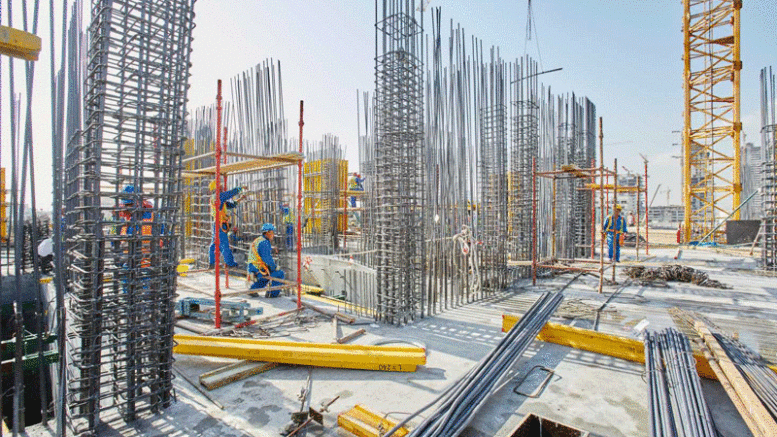ConDig (03-Sept-19). US construction spending inched up 0.1% in July as rises in public and multifamily construction outweighed the impact of lower expenditure in the single-family homebuilding market, according to latest Commerce Department figures.
Construction expenditure nudged up to $1.289 billion in July from $1.288 billion June, but was down 2.7% on $1.32 billion in the year-ago period. For the year-to-date, spending declined by 2.1% from the January-July 2018 total.
The rise in July comes as public construction spending increased 0.4% and 5.6% for the year-to-date. Among the four largest public categories, spending in the first seven months of 2019 jumped 12% compared with a year ago, with transportation (airports, transit, rail and port) projects rising 9.8%.
Private residential construction spending also nudged 0.6% higher in July, but slumped 8.5% for the year-to-date. Single-family homebuilding tumbled 8.7% in the first seven months of the year, while spending on multifamily projects increased 6.6%. Spending on residential improvements nosedived 12.7% for the year-to-date.
But private nonresidential spending dropped 0.8% from June to July, but the seven-month total was 0.6% higher than during the same period last year.
“Overall spending totals have been fluctuating for more than two years, with divergent patterns for residential, private nonresidential and public construction,” said Ken Simonson, chief economist at the Associated General Contractors of America (AGC).
“Although year-to-date construction spending in the first seven months of 2019 combined was less than in the same period last year, most nonresidential and multifamily contractors remain busy and optimistic about future work.”
US construction spending took an unexpected tumble in May in the wake of investment in private construction projects crumbling to its lowest level in nearly 2-1/2 years.
A recent survey by Autodesk and AGC found that over three quarters of US contractors face difficulties filling hourly craft positions, which has raised construction costs and pushed out project completion times,
Of the nearly 2,000 survey respondents, 80% said they are struggling to find qualified craft workers.
The lack of skilled labor is also increasing construction costs, with nearly a third of companies reporting that they have raised construction prices and are putting longer completion times into their bids for new work because of the lack of workers — putting future development and infrastructure projects at risk.
“Construction firms are taking a broad range of steps to boost pay, increase training and become more efficient as they cope with labor shortages,” said Stephen E. Sandherr, chief executive officer at AGC.
“Public officials can help by boosting investments in career and technical education and allowing for more immigrants with construction skills to legally enter the country.”
